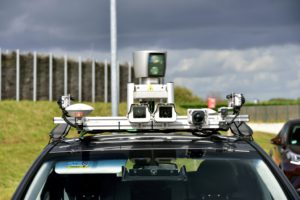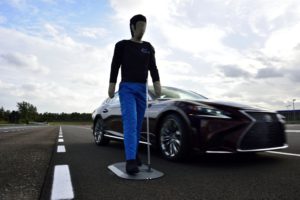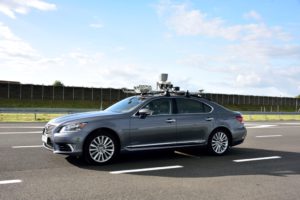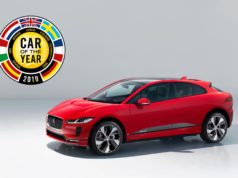At the recent Advanced Technology Seminar of Toyota in its R&D Centre in Zaventem, Belgium, the company explained its Global Vision towards ZERO accidents. In a unique double interview, Seigo Kuzumaki, TMC Chief Professional Engineer in charge of safety R&D and Government Affairs of Technology, and Gill Pratt, CEO of the Toyota Research Institute, detail Toyota’s approach with respect to Automated Driving, a topic that is increasingly taking centre stage in the automotive industry.
 For Toyota, what is the main driving force behind its Automated Driving program?
For Toyota, what is the main driving force behind its Automated Driving program?
Kuzumaki: “Toyota wants safe and ever-better mobility for all. We do not want people to worry about the possibility of being involved in an accident. When somebody gets in a car, you would just say “Have fun”, instead of “Be careful.” With Automated Driving, we set ourselves the goal to reduce the more than 1.3 million lives currently lost around the world in traffic accidents each year.”
Pratt: “In addition, everyone, and we mean really everyone – including the elderly, and people with physical disabilities – unable to drive today would be able to move safely anywhere they want to go.”
 How do you plan to make this happen?
How do you plan to make this happen?
Kuzumaki: “The future mobility we envision is built on the concept that the car will help you remain safe. The car is watching over you like a teammate would do. That is why we have dubbed our mobility approach ‘Mobility Teammate Concept’.”
Pratt: “Over time, as a car’s artificial intelligence (AI) improves, the car will increasingly learn drivers’ and passengers’ habits and preferences. AI will sometimes follow these preferences, at other times it will warn the driver. Car and driver will evolve together and become inseparable.”
 How does that work in practice?
How does that work in practice?
Pratt: “Toyota distinguishes two types of vehicle autonomy: ‘Chauffeur’ and ‘Guardian’. The Chauffeur concept is Automated Driving when the driver doesn’t want to, or cannot drive. In Guardian mode, a human is driving with the support of the system’s advanced driving assistance. What is important to emphasize in our approach is that we leave the choice to the driver. Even when the car will be fully automated, drivers will still be able to enjoy the fun and freedom of driving, as they wish.”
Kuzumaki: “These advanced safety technologies are only one side of the equation. We take a 2 axes approach: as well as developing cutting-edge technologies, we are working to popularize safety features in a more affordable way, across our range. Only when safety technologies are on the full line-up, including entry-level models, can we make a real difference. We are proud that our accident avoidance features today are on 92 percent of our European sales, helping us strive towards zero traffic accidents.”
 That sounds promising, but when can we expect to see all of this on the road?
That sounds promising, but when can we expect to see all of this on the road?
Kuzumaki: “In 2020, we will introduce Highway Teammate. Highway Teammate is Automated Driving on highways: merging onto or exiting highways, overtaking other vehicles and changing lanes. That is if that is what the driver wants. In line with our philosophy, the system will always collaborate with the driver.”
No Automated Driving on ordinary roads then?
Pratt: “In the early 2020s, we plan to introduce Urban Teammate, which is Automated Driving on ordinary roads. With more advanced AI, Urban Teammate will enable further driving automation.”
 What is your stance on collaboration versus competition in this field?
What is your stance on collaboration versus competition in this field?
Pratt: “Concerning collaboration, we remain very open. We need to manage carefully competition and collaboration as we are in an ever-changing environment.”
Kuzumaki: “Indeed, we should make it clear in what fields companies should compete and collaborate. For example, high accuracy mapping is an area where we could share information. Collaboration is important, but so is competition to accelerate innovation.”
How does TRI fit in Toyota’s global R&D structure?
Pratt: “At Toyota, Kaizen or Continuous Improvement, is at the heart of everything we do. It remains the foundation and one of our biggest strengths. However, in these unprecedented times, we need additional approaches. In this particular domain, it’s simply not enough to only take small steps. You have to take leaps, which often results in failure. If you are lucky, after you have the courage to keep on failing, again and again, you suddenly succeed. The mission of TRI is to explore spaces and take these leaps for Toyota. In addition to the work we’re doing ourselves we also recently created Toyota AI Ventures, a corporate venture capital fund designed to cultivate and invest in the entrepreneurial spirit of start-ups in the field of Data, AI/AD, Machine Learning, Robotics…”
 How do you aim for the highest level of safety? How safe is safe enough?
How do you aim for the highest level of safety? How safe is safe enough?
Pratt: “Writing the software is relatively easy to do. The hardest part is predicting human behaviour. Will the car turn left or right? Will the child follow the ball? We are building a statistical model based on the data we gather from real human behaviour. From these statistics, we create a simulated environment and test our autonomy software in reaction to that. But this is not enough. We simulate many more miles with much worse traffic than actually happens in the real world. Finally, we complement these simulations with physical testing, as the road remains the best test environment. By combining simulation and real-world driving, we aim to reach the trillion mile challenge Toyota set itself.”
Kuzumaki: “It is crucial that the vehicle is completely safe on its own. This means without the need for interaction with infrastructure or other vehicles. This ensures the vehicle can safely navigate despite a lack of service caused by a natural disaster, for instance. As these vehicles will have to deal with extreme weather and traffic situations, the system requires a mix of many different sensors that are complementary to one another. Lidar, for example, struggles with snow.”
 To conclude, what are the remaining challenges for the future of mobility?
To conclude, what are the remaining challenges for the future of mobility?
Kuzumaki: “First, legislation. We need unified regulations if we want to introduce Automated Driving technology safely in various regions. Second, Automated Driving requires transmission of a huge amount of data, and it is important to protect data security and personal data.”
Pratt: “Reaching level 5 autonomy is definitely one of the remaining challenges. AI does not have the sufficient level of human reasoning at the moment. I challenge everyone who says they know when they’ll achieve level 5. Social acceptance is another challenge. Not everyone is ready to embrace AD/AI. However, we start to see a change in mindset. Remember elevators from the past? They used to be ‘manned’ but over time automatic elevators became widely accepted. We must ensure that our products are safe and that automated vehicles perform significantly better than a human driver if we want a mother to trust her children’s life with an automated car.”
































